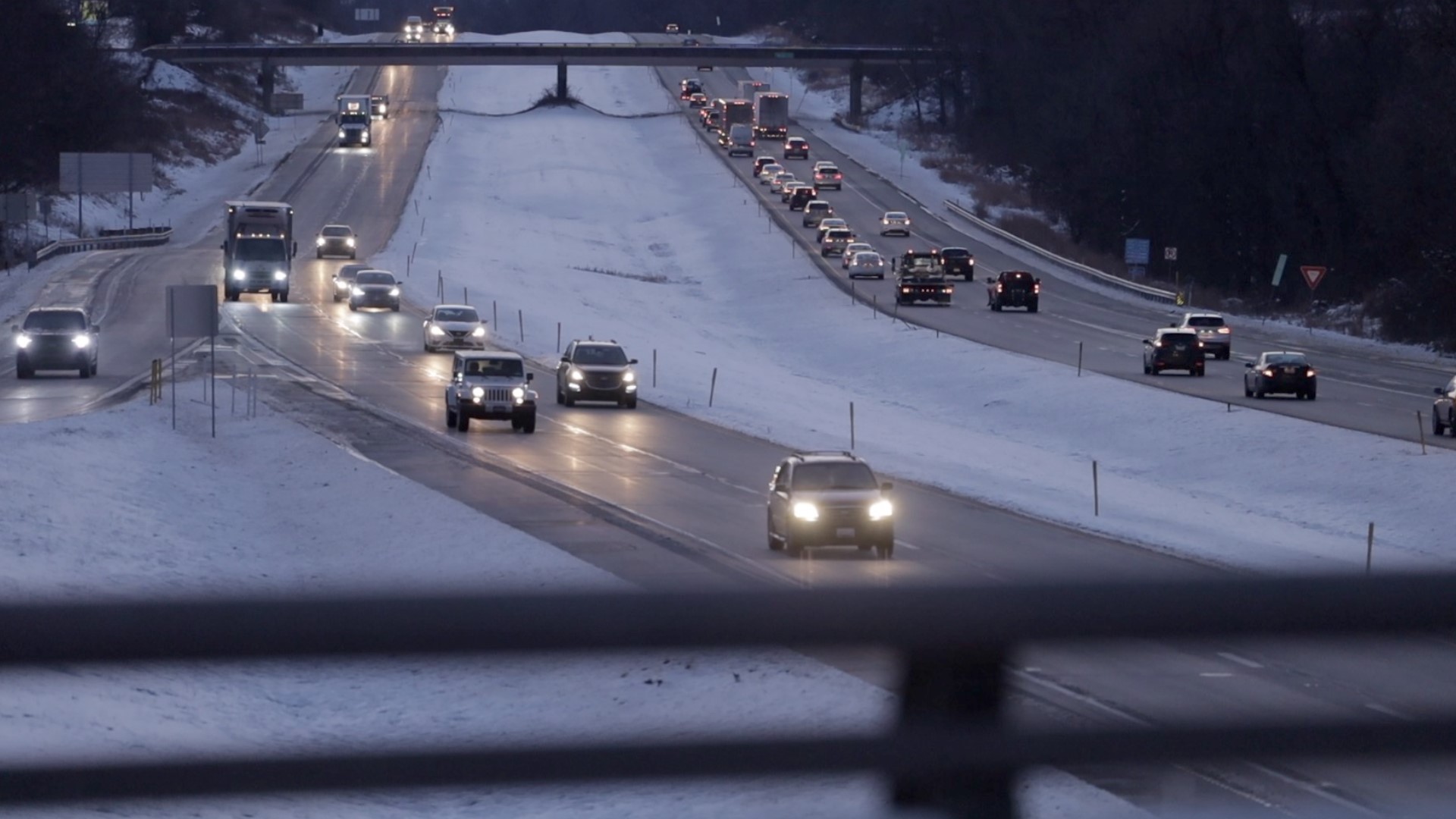HARRISBURG, Pa. — A massive gridlock along Interstate-95 in Virginia on January 3 forced drivers to sleep in their cars overnight after a winter storm locked them into a traffic jam. Virginia transportation officials came under fire for not doing enough to prevent the major pile-up given the forecast information they were provided.
Equally dire situations have played out in Pennsylvania. Two historic storms sparked changes to how the state confronts severe weather. FOX43 Reveals what plans are now in place to prevent drivers from being stranded on Pennsylvania highways during a winter storm.
Most Pennsylvanians can remember where they were during the Valentine’s Day blizzard of 2007. The marathon storm dumped snow, ice and freezing rain along the Northeast corridor. Hundreds of cars were stuck on Interstates 78 and 81 for hours and hours.
“What started it all was trucks who couldn’t make it up icy hills,” said Fritzi Schreffler, Safety Press Officer for PennDOT.
FOX43 Reveals that the Valentine’s Day snow storm of 2007 changed everything about the way Pennsylvania responds to winter emergencies. At the time, there was no such thing as a statewide coordinated response. Each state and local agency acted independently of one another.
“Out of that came what we call the Witt report. That kind of tied together PEMA, the state police, local emergency responders, PennDOT, anybody who would have been involved in trying to manage a situation like this, and it put those groups into better communication with each other,” Schreffler explained.
State agencies adopted a new command and control process, enhanced emergency operations procedures, and coordinated resources to handle incidents. The state felt better prepared than ever before, with increased staffing and new systems in place to keep the public informed. Operations ran smoothly for the next nine years—until another disaster hit.
In January 2016, Winter Storm Jonas slammed Central Pennsylvania and dumped as much as 36 inches in some parts of the region. It is the largest snowstorm in the Harrisburg area in terms of the amount of snow that fell.
More than 500 drivers were paralyzed behind disabled tractor-trailers on the Pennsylvania Turnpike. The 16-mile backlog lasted more than 24 hours. In the weeks that followed, state lawmakers held legislative hearings to determine what went wrong.
The Pennsylvania Turnpike Commission later released a 30-page After-Action Review (AAR) of its response to the record-setting snowstorm, which outlined 22 recommendations for future responses.
Carl DeFebo, director of communications for the PA Turnpike Commission, said the most significant changes that came out of the AAR were vehicle tier restrictions and how the Commission communicates with drivers. The Tier Program restricts certain tractor-trailers on highways during a storm to prevent pile-ups.
But when they do happen, why isn’t traffic detoured off the highway?
Carl DeFebo: Sheltering in place on the turnpike really has to do with what kind of conditions are on other local roads.
Rachel Yonkunas: Why not just plow the back roads? What are some other reasons as to why it would be safer on the highway versus detouring off of it?
Carl DeFebo: Well, in the case of Jonas, we were in a very rural part of Pennsylvania and the roads there were very small roads, not necessarily designed to accommodate that level of traffic. A lot of times those are hard decisions to make, but I’m glad you’re asking the question because people wonder why those decisions are made.
Since Winter Storm Jonas in 2016, FOX43 Reveals that the Commission added more gates along the turnpike to increase emergency access. They also brought in movable medians, in some areas, to enable U-turns and have equipment at nearby maintenance facilities to remove them in case of an emergency.
Even with these safety measures in place, expect the unexpected. In the event another major storm locks drivers into a standstill, the state created 511PA Connect. This is an alert system that connects incident response teams directly with drivers trapped on the highway. 511PAConnect is not a mobile app and requires no initial download or action from motorists.
During prolonged, emergency roadway stoppages that are expected to last four or more hours, 511PA Connect provides official status updates to motorists and identifies urgent needs. The tool also gives emergency crews a clearer picture of who is sitting in a trapped vehicle and where they are, so agencies can better plan for the use of resources.
“We’re better armed today than I think ever before in history because of the technology, because of learning from winter to winter,” DeFebo added. “We learn. We improve. We get better.”
The Turnpike Commission also keeps stockpiles of bottled water and nutrition bars at various maintenance facilities along the highway. Incident response teams would be able to distribute those items to drivers stranded in a traffic jam, while other crews focus on making the highway functional again.
FOX43 Reveals issues that affect you and your family to keep you informed. If you have a topic you want us to investigate, send us an email to FOX43reveals@FOX43.com.

